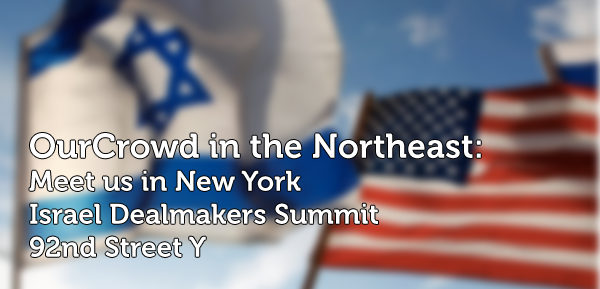We are all familiar with sitting in standstill traffic, with a now-room temperature coffee and your favorite podcast to take your mind off the knowledge that you, and thousands around you, have no choice but to wait.
It’s not just you. The U.N. reports that 55% of the world’s population lives in urban areas, and will grow to 68% by 2050 with another 2.5 billion people added to urban areas by 2050. With this influx comes the serious question of congestion. Luckily, major players like Uber and Virgin are betting on a new market to change the game– MaaS or Mobility as a Service.
The MaaS market is defined as transportation services permitting a means of transport outside of personally-owned vehicles. As we well know, Uber built a ride-sharing service empire which is now worth $72B, which according to some forecasters single-handedly led to a decrease in car ownership among young adults. The tech unicorn’s recent purchase of Jump Bikes (an electric bike sharing platform and OurCrowd portfolio company) for a reported price of ~$200M, shows their commitment to building MaaS.
This market is expected to grow to $358.35 billion by 2025 from $38.76 billion in 2017, expanding to ride-sharing, car-sharing (like early adopter ZipCar, which was acquired by Avis in 2013), and bike-sharing services. With such a ripe market, new forms of transportation are being invented, breaking the 100-year domination of private automobiles.
skyTran
skyTran, born of innovation initiatives from the US Department of Transport and realized in the NASA incubator, is developing a new form of on-demand mobility service – compact and localized like private cars, but operating on the infrastructure of public transportation. Reminiscent of cable cars, these ‘pods’ operate on a managed network infrastructure that guarantees arrival time 3X faster than regular cars, traveling directly from the point pickup to the final destination without any intermediate stops.
Most appealingly, the pods, which hover on a track several meters above the ground, is said to take up significantly less ground space than traditional cars, meaning less congestion and highway traffic buildups. While it sounds futuristic, the company has seen strong interest from high-profile investors like WeWork’s Adam Neuman and Tsing Capital, and estimates a project pipeline in the hundreds of millions in the next few years.
Jump Bikes
As mentioned, West Coast-based Jump Bikes was recently acquired by Uber for a reported price of around $200M and represented the MaaS leader’s move into other transportation channels beyond cars. The company, led by Ryan Rzepecki, provides custom-designed GPS enabled dockless bikes in it’s pilot cities San Francisco and Washington has deployed 14,000 bikes, and clocked over 5 million rides over the past four years. Users are taking to the bikes rapidly; they may expand to new cities soon.
Virgin Hyperloop One
There are several other high-profile private and early-stage companies working on developing next-generation MaaS services that have garnered interest from investors and have raised a significant amount of financing at high valuations. The most well known is the Elon Musk-inspired Hyperloop One, recently rebranded as Virgin Hyperloop One after an investment by Richard Branson, who became the ambitious company’s chairman.
Founded in 2014, Virgin Hyperloop One is the commercialization of Elon Musk’s designs for the Hyperloop transportation system. On one foot, the concept is to build an inter-city set of high velocity pods running through tunnels at speed of 650 miles an hour, using magnets and vacuum. The company reportedly raised over $275M, in part from OurCrowd, and is valued at $754M.
While autonomous driving is dominating the transportation technology conversation, the MaaS market is gaining speed. Companies like the ones mentioned above are taking the opportunities created by a rise in the sharing economy and user willingness to re-imagine transportation to create entirely new infrastructure, congestion predictions, and travel time expectations. These startups – and the investors backing them – are changing what the future will look like.
Review more companies by browsing our mobility portfolio here.











